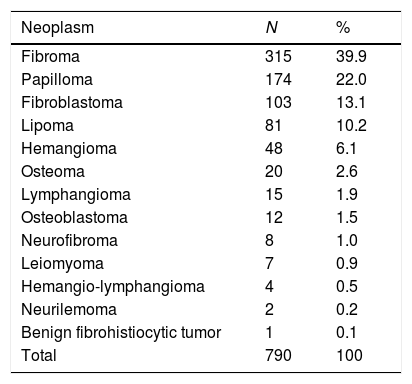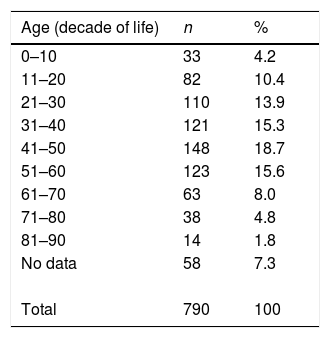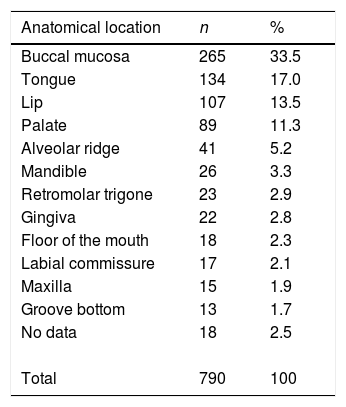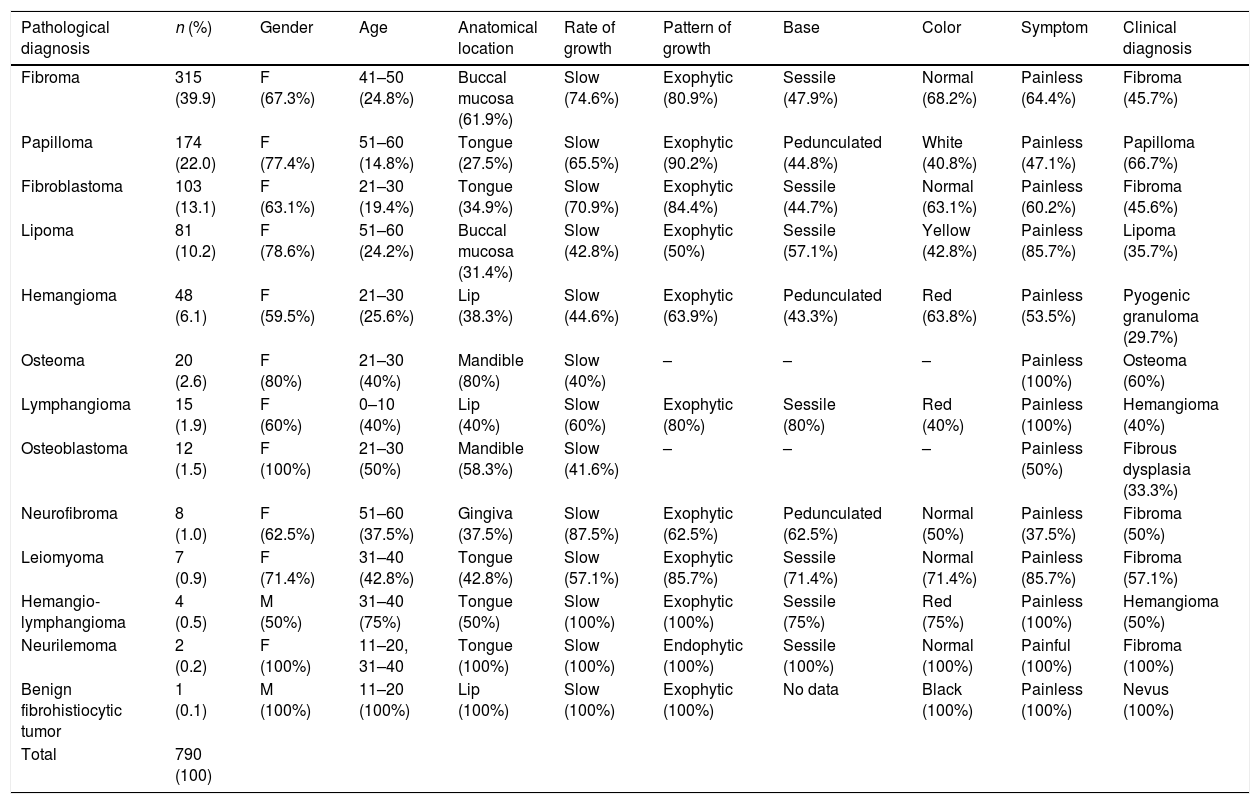Oral benign neoplasms (OBNs) exhibit some features that can guide the professionals to the correct diagnosis and best treatment. Through retrospective studies, medical records can be reviewed to better describe a given population and, furthermore, help clinicians in routine practice. In this context, the objective of this paper was to analyze the cases of OBNs of an oral pathology referral department, from 2003 to 2017, in order to better understand their epidemiological and clinicopathological characteristics.
MethodsA total of 8355 histopathological reports were analyzed. Lesions diagnosed as OBNs were selected and the following variables were recorded: gender, age, histological type of the lesion, anatomical location, rate and pattern of growth, type of base, color, symptomatology and diagnostic hypotheses on clinical examination.
ResultsOBNs represented 9.4% of all lesions diagnosed. The most frequent histopathological types were fibroma (39.9%), papilloma (22%), fibroblastoma (13.1%), lipoma (10.2%) and hemangioma (6.1%). Overall, most cases affected females (n=518; 65.6%) and in the fifth decade of life (n=148; 18.7%). The oral mucosa was the most common site (n=265; 33.5%). The most common features of each OBN were also highlighted.
ConclusionThe most common OBNs were fibroma, papilloma, fibroblastoma, lipoma and hemangioma. Overall, the OBN presented common clinical features; however, in particular cases, there are some characteristics that can lead the professionals to the correct diagnosis. Nevertheless, in general, histopathological analysis must be performed to confirm diagnosis. Intraosseous tumors and large lesions may require imaging tests to help diagnosis.
Las neoplasias benignas orales (NBO) presentan características clínico-patológicas específicas que pueden guiar al profesional al diagnóstico correcto y a un mejor tratamiento. Los estudios retrospectivos son uno de los principales recursos utilizados para conocer la situación actual de una población determinada y estimar sus necesidades para la implementación y el mantenimiento de los servicios de salud. En este contexto, el objetivo de este trabajo fue analizar los casos de NBO de un servicio de referencia en patología oral, de 2003 a 2017, para comprender mejor sus características epidemiológicas y clínico-patológicas.
Métodosse analizaron un total de 8355 informes histopatológicos. Se seleccionaron las lesiones diagnosticadas como NBO y se registraron las siguientes variables: sexo, edad, tipo histológico de la lesión, ubicación anatómica, índice y patrón de crecimiento, tipo de base, color, sintomatología e hipótesis diagnósticas en el examen clínico.
ResultadosLas NBO representaron el 9,4% de todas las lesiones diagnosticadas. Los tipos histopatológicos más frecuentes fueron fibroma (39,9%), papiloma (22%), fibroblastoma (13,1%), lipoma (10,2%) y hemangioma (6,1%). También fueron verificados el perfil de los pacientes y las presentaciones clínicas de estas lesiones.
ConclusionesLas NBO más comunes fueron fibroma, papiloma, fibroblastoma, lipoma y hemangioma. En general, las NBO presentaron características clínicas comunes; sin embargo, en casos particulares, existen algunas características que pueden llevar al profesional al diagnóstico correcto. Sin embargo, de forma general, el análisis histopatológico debe hacerse para confirmar el diagnóstico. Los tumores intraóseos y las lesiones de gran tamaño pueden requerir exámenes de imagen para ayudar al diagnóstico.









